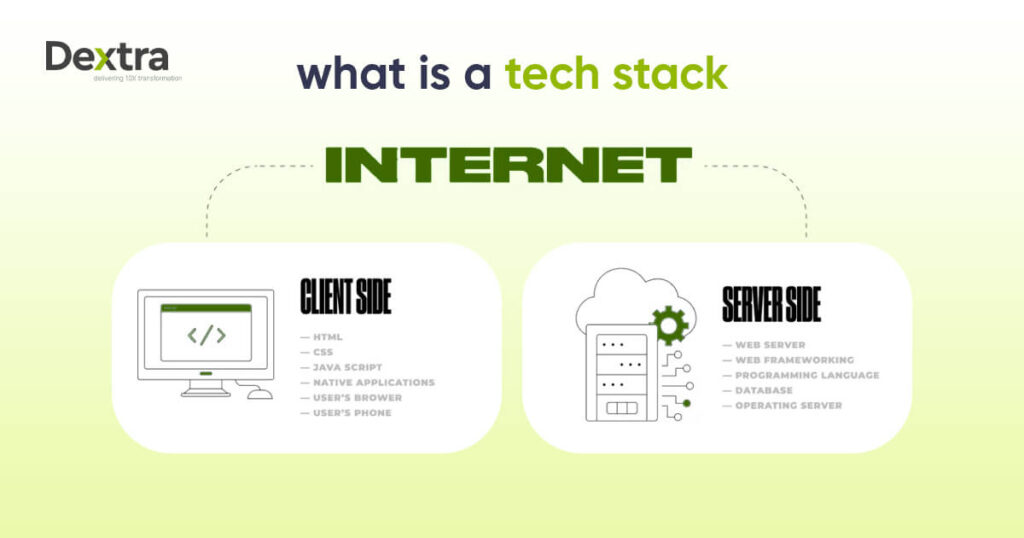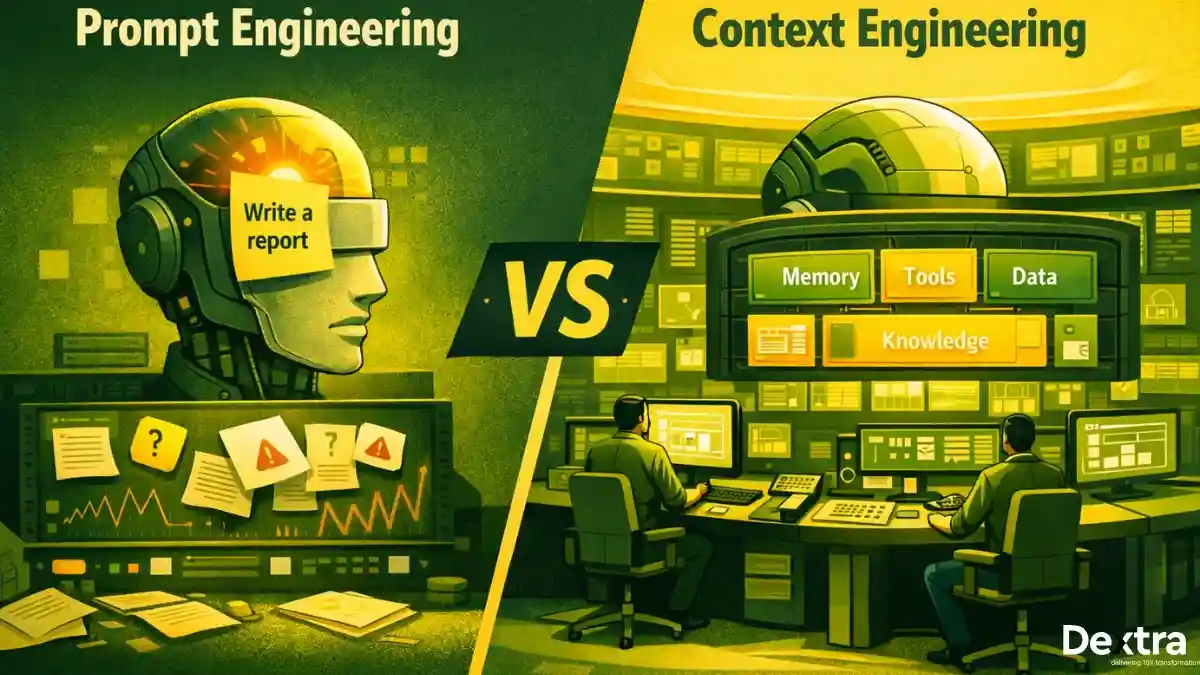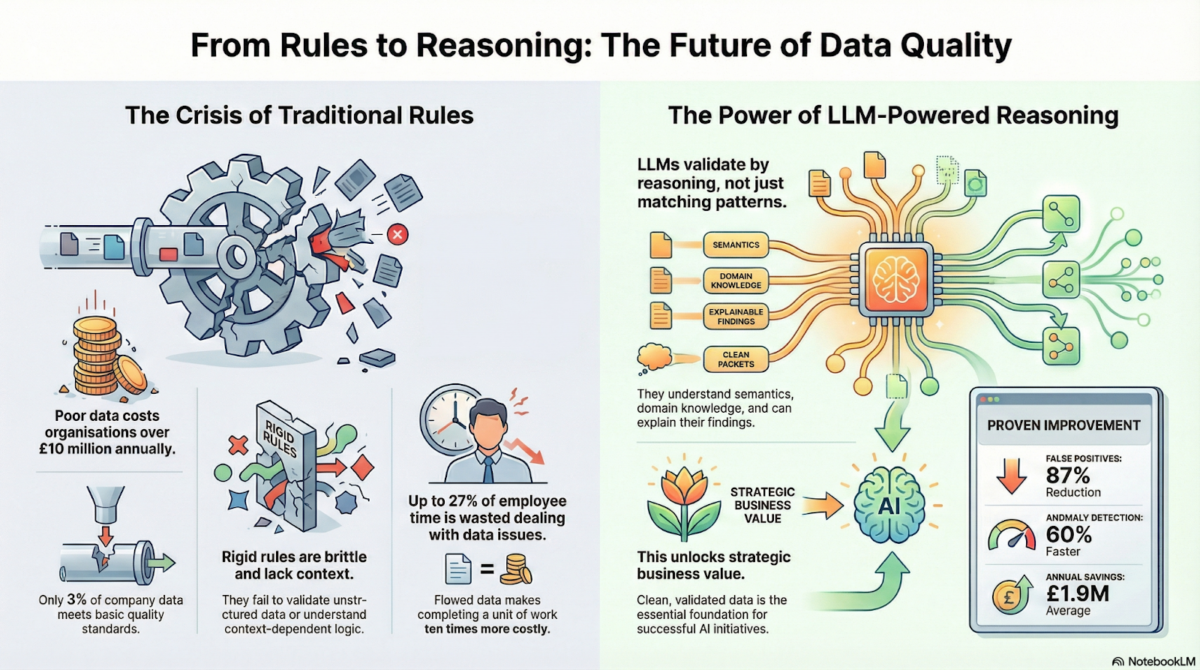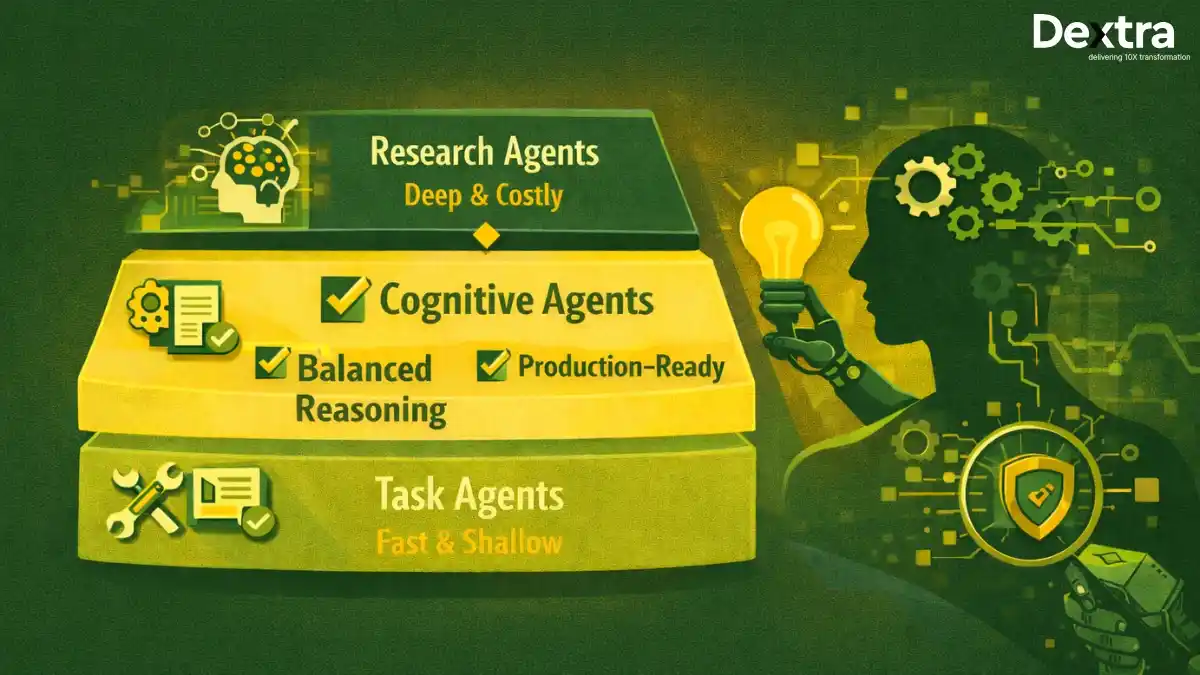A suitable tech stack, also called a technology stack, is needed to build a scalable, experienced, fast-paced, and captivating interface for web and mobile applications. Moreover, you need a suitable model of technologies and infrastructure to deliver a cost-efficient and scalable, successful project.
In this article, you’ll explore the fundamental models and methodologies for effectively and productively integrating AI (Artificial Intelligence) and IT (Information Technology) solutions into a digital platform. Selecting a stack for any task is calculated as selecting a suitable tool.
What is a Technology Stack?
A tech stack, or a software stack, is a fundamental framework of tools, programming languages, libraries, and technologies that empower the development and operation of any application, software, or project. The selection of any stack can leave significant impacts by integrating technologies to leverage tools to measure the product.
Defining how a company uses the stack to build, scale, and maintain any project is complex. A technology stack determines any web or mobile app’s business performance, security, and authenticity for a better user experience. Therefore, it is essential to understand the fundamentals of the stack to choose suitable technologies to integrate to meet projects and acquire the desired innovative results in today’s digital landscape.
Technology stacks mostly combine Front-end (Client), Backend (Server), and programming languages.
What is a Modern Tech Stack?
The modern technology stack focuses on the updated and most efficient combination of all technologies and integration in software development. Therefore, we need data, flexibility, and visibility to make quick decisions, which results in ad hoc data chaos. Groopit replaces the chaos with crowd-solving, an entirely new category of software that helps everyone make better and faster decisions.
A modern tech stack includes most programming languages, data lakes, cloud services, AI tools, and performance monitoring tools to meet industrial demand in today’s fast-paced technological era. It is the most flexible, scalable, and able to integrate with updated tools for meeting high-end demands in a fast-paced digital era.
What is the Tech Stack Example Used for Software Development?
You have gained basic knowledge about the software stack so far; let’s dig deep to learn the suitable and popular tech stacks of top development industry professionals.
-
LAMP Stack
Lamp is an acronym. It stands for Linux, Apache, MySQL, and PHP. It is the stack of software that most of the software and its most fundamental makes the internet run. It is the oldest and most demanded tech stack to build software web and mobile apps. LAMP stack is cost-efficient, open-source, and runs on the Linux operating system. Moreover, the internet we use in the actual form today is because of the LAMP stack. To run software, you must have a server, such as a physical or virtual server.
The LAMP stack is used to build dynamic websites and web applications.
-
MEAN Stack
A MEAN stack is an application stack that includes the application and database to run a website or a web-based application. It is designed to run completely written or compatible with JavaScript. A MEAN is a four-letter acronym; the first letter is M, a database termed Mongo, which is friendliest with JavaScript. The next letter in MEAN is E, which means Express, sometimes called Express JS. Express in MEAN is a layer within your application stack that talks to the database. Express takes all the requests, then fetches them, and sends the data that comes back. The next letter is A, which means Angular or React, JavaScript-compatible frameworks. Finally, the last word is N, abbreviated as Node.JS, a parsing and return layer.
-
MERN Stack
It is getting a lot of upticks and questions lately: what exactly is the role of MERN in a software stack? MERN stack is an application stack that includes the database for running a website or web-based applications. Everything in a MEAN stack is JavaScript-compatible. Therefore, explaining the MEAN acronym, M stands for MongoDB (database). The second letter for our database is E, which stands for Express, sometimes called Express. JS. Express is the layer within your application stack that talks to the database. The next letter, A, stands for Angular, but it could be React. Angular or React are JavaScript-compatible frameworks. When someone clicks on your website, that person comes to your web application to interact with you. That is all done and displayed using Angular. The last letter is N, which stands for Node layer, which is open-source and free.
-
.Net Stack
.Net stack, globally known as TLD, is driven by a work network. It is an open-source platform developed by Microsoft and widely used for building desktop, web, and mobile apps. It supports multiple programming languages, libraries, tools, and APIs, making it an excellent choice for various software development tech companies. It is mostly used in the corporate sector where Windows OS is predominant. It is also compatible with Linux, Mac OS, iOS, Andriod, C# programming languages, and SQL (database).
-
Java Stack
Java Stack is also known as JEE, which is abbreviated as Java Enterprise Edition for developers with corporate functions for computing and web application services. Java has been the oldest practising stack in software development for a decade. It is the best choice for getting high-performing and efficient results. The Hibernate handles database operations, making the stack more powerful for enterprise-level projects.
-
Flutter Stack
Flutter stack is an open-source framework by Google for developing multi-functional mobile, desktop, and web applications from a single coding database. Google also produces this stack, an elite choice for the corporate sector to create high-performing, visually attractive apps for iOS and Android.
-
Jam Stack
Jam stack changes or revolutionizes how businesses provide web content. Traditionally, the CMS room of websites is powered by WordPress, which involves many moving parts. Every user request goes through a complex process with a web server back-end coding database HTML.JAM in jam stack is abbreviated as JavaScript, APIs, and HTML markup for building websites and web applications. The JAM stack architecture is specially designed for a fast-paced web experience, tight security, and easy scalability.
How to Choose a Suitable Technology Stack?
Selecting an appropriate technology stack necessitates a careful analysis of your project’s particular requirements. First, determine the objectives, features, and functionalities that your application requires. Then, consider the need for scalability to ensure the stack can accommodate expansion and more traffic without sacrificing efficiency. Assess the experience of your development staff and choose technologies they are skilled in to shorten learning curves and increase output.
The project deadline and budget are the primary considerations of any development project when making a suitable choice for a stack. Selecting a stack can help you calculate the estimated time and schedule your project according to your capacity and budget. This guarantees access to relevant information and troubleshooting help, which is important to prevent technical bugs and disruptions in the development system.
Benefits of Using Tech Stack in Software Development Process
A corporate development sector benefits from using suitable tech stacks for its projects under skilled supervision. We are sharing the following advantages:
-
App Development Efficiency
Tech stacks are groups of well-composed, articulated frameworks, libraries, APIs, and tools in any software development process pipeline. These stacks help the development team be more focused and gain efficient results for ongoing web and mobile application projects. They speed up work efficiency, enabling faster project planning in the market.
-
Project Scalability
Horizontal and vertical scalability depend on how you choose a suitable tech stack for your project. A tech stack helps improve user experience by handling the growing data load and increasing traffic to process the network. Therefore, modern tech stacks are being used by enterprises to scale up their business and calculate growth without damaging the project performance.
-
Maintaining the Updates
A suitable technology stack that follows industrial standards in the development process can easily be updated and maintain best practices. A well-structured code is easy to manage and maintain quality with heavy traffic coming to the website. It can help remove bugs and technical errors and ensure the software or web apps support functional attributes.
-
Cost-effective
Using the related tech stack in any software or web development process can benefit the development team with a speedy and cost-effective approach. It can leverage any open-source segment, adopting the best framework required to formulate the project by reducing the cost. It allows the development team to increase productivity using limited resources more efficiently, ultimately cutting off extraordinary expenses.
-
Security
Any team or project’s primary requirement is security. Choosing a well-established and relevant tech stack for a development goal can reduce the risk of bugs and technical errors. Developers can maintain the coding database without any security threat, making the stack more secure and compatible with other segments. Many tech stacks come with built-in security, making them ideal choices for the corporate sector.
-
Performance Optimization
A well-structured technology stack can stimulate development to ensure your application performs optimally. If you plan to use high-performing technical technologies, you can build a faster, more responsive, and scalable product. A performance booster element can leverage the development process and handle the workload pressure of increasing web volume.
The Bottom Juice
Choosing a valuable tech stack for any enterprise is an essential and basic requirement for successfully projecting any software development project. A tech stack depends on your project length, goals, and the technical expertise of your team, whether you are building successful web and mobile applications or enterprise solutions. It is a speedy, cost-effective, and secure source of completing all the technological projects of building applications using the best-integrated framework, tools, and APIs. You can ensure the reliability and scalability of your multi-functional applications, driving high traffic load and evolving with your business enterprises.
Frequently Asked Questions
Q. What is the meaning of tech stack?
A technology stack is a set of architectural groups of technologies used to develop web and mobile applications using technical frameworks, tools, APIs, and databases.
Q. Is Python a tech stack?
No. Python is not a technology stack. It is a programming language used as a standard in the software development process. It does not include a database, running time, or operating system.
Q. Can we call C++ a tech stack model?
C++ is a programming language and is not considered a tech stack. C++ is used in IT applications like Google Technology stack, Python, Java stack.
Q. Which is the most demanding tech stack in 2024?
There are almost 10 technology stacks, but the most demanding tech stack in 2024 is Linux (Opera system), Apache (server), MySQL (database), and PHP (Programming language).








